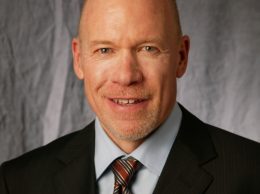Fienup: Federal Reserve actions diminish economic future

Matthew Fienup
By Matthew Fienup
For years, we have been critical of Federal Reserve policy and the significant impacts that it is having on the U.S. economy.
As we wrote in 2017, “U.S. monetary policy is among the greatest of internal risks to U.S. economic growth.” And in 2018, “Extraordinary policy experimentation undertaken by the Federal Reserve … remains a major impediment to robust economic growth for the nation.”
These extraordinary interventions are threefold: ultralow short-term interest rates; the purchase of trillions of dollars of long-term Treasurys and mortgage-backed securities; and the payment of interest to commercial banks for reserves stored at the Fed.
Any one of these policies, by itself, would have been unprecedented. The combination represents a dizzying policy experiment whose full consequences will not be understood until after the next economic downturn.
For years, we have felt fairly alone in our criticism of the Fed. But following a speech by Fed Chair Jerome Powell, you no longer need to take our word about the nature of Fed policy and its consequences.
Speaking at Stanford University, Powell admitted that, after lowering the Fed’s short-term interest rate target to zero in December of 2008, “Unable to lower rates further, the committee (FOMC) turned to two novel tools … From the outset, the committee viewed them as extraordinary measures to be unwound or ‘normalized’ when conditions warranted.”
In the same speech, Powell admitted that there is a link between extraordinary monetary policy and slow growth: “The post-crisis period has seen many economies around the world stuck for an extended period at the ELB (zero interest rate boundary), with slow growth … Experience suggests that more frequent ELB episodes could prove quite costly in the future.”
Make no mistake. These were extraordinary interventions that were meant to be only temporary.
These interventions have consequences. They are tightly linked to the anemic decade of growth that the U.S. has suffered since the Great Recession.
It follows that the Fed should be moving in a determined way to reverse these extraordinary policies.
In our estimation, they should have been doing so since at least as early as 2012.
To our shock, Powell also used the speech at Stanford to announce a reversal of the Fed’s humility regarding these interventions. As Powell claimed, “The world has moved on in the last decade, and attempting to re-create the past would be neither practical nor wise.”
You see, the Fed now plans to maintain a balance sheet of $3.5 trillion in assets. Forever. And while the balance sheet would naturally shrink over time, as securities reach maturity, the Fed plans to reinvest funds into new securities. That’s QE infinity.
Thwarted by its own balance sheet and unable to influence short-term interest rates by traditional means, the Fed plans to continue using the payment of interest on reserves (IOR) as the primary policy tool for achieving its interest rate target. Never mind that IOR is unprecedented and poorly understood.
Along with the Fed’s bloated balance sheet, IOR also dampens the critical price signal represented by the yield curve, which is now widely held to no longer contain the information that it used to regarding market risk and the business cycle.
And the Fed has no plan to return to a normal interest rate regime, which would require sustained increases in the Fed funds target rate.
As Powell explained, “Rates in normal times now tend to be much closer to zero than in the past.”
Powell would apparently have us believe that the new regime of ultralow interest rates is some unexpected natural phenomenon, like a change in the weather.
In fact, it is not a structural break in the economy that has produced this result. It’s a structural break in Fed policy.
To review Powell’s stunning revelations, the Fed undertook extraordinary interventions during the financial crisis. The interventions were intended to be temporary. They have long-term negative consequences for the economy.
While the Fed’s own internal logic argues for unwinding, we are now going to make them permanent. We will simply live with the negative economic consequences that result.
The outlook for the U.S. economy is thus diminished.
Even more worrisome is the outlook for the next recession.
We can’t imagine what the Fed’s response will be, given that the Fed will still be mired in the crisis-era responses of the previous recession. Unfortunately, the Fed doesn’t know what its response will be either.
• Matthew Fienup is the executive director of the Center for Economic Research and Forecasting at California Lutheran University.










